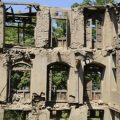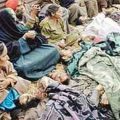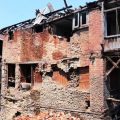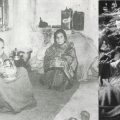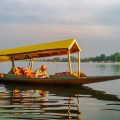Diary of a Kashmiri Pandit: Remembering the Horrors of Pre-planned Ethnic Cleansing in Kashmir
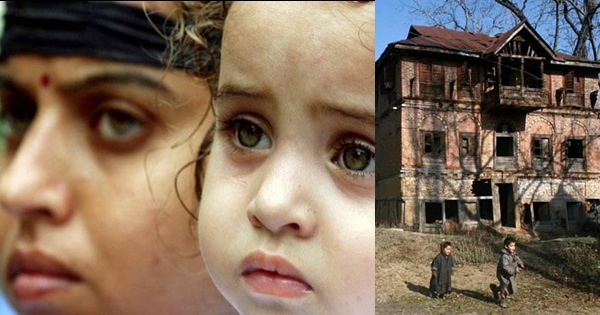
(This post is Part II of the diary. Click here to read Part I)
It was Jan 26th 2016. Happy Republic Day, my beloved Nation! Even as a kid I needed no coaxing to watch the Republic Day parade. Watching the Shraddhanjali offered at Amar Jawan Jyoti, the Salami by Rashtrapati Angrakshak, the playing of the National Anthem, the brilliant march past by our valiant soldiers and enthusiastic school children, the Jhankis, the cultural show, the heart-stopping motorcycle formations and the flypast in air! I mean, even a non-Indian would be amazed by this breathtakingly wonderful display of India’s majestic, regal, rich, harmonious diversity. But then what do I know! Some senior journos were quick to question this wasteful display on Twitter – their favourite platform to vent their ire out.
Achche Dinn are truly here in our intolerant country, for, after more than 6 decades, people have started publicly questioning these rituals, albeit, on Twitter! Putting forth such views in their mainstream vehicles might jeopardise the circulation or viewership thereof, you see! I am certain that very soon, our friendly neighbourhood Animal welfare associations will find fault with the inclusion of horses, camels and dogs in the parade!
Yes, I know, my thoughts are all over the place. Apologies! Going back to this wonderful Rashtriya Parvthat I so love. My most favourite part is everyone standing up for the National Anthem. As a kid I would (still do) sing along, to my heart’s content. Don’t tell anyone, but I do it in movie halls too! And if I could, I would make it mandatory for every organisation (small, medium, large) to start the day with the National Anthem! And if it makes me sound like a fascist or a fanatic or both, so be it! I simply cannot imagine how people can ‘choose’ to invoke their Right to Freedom to not stand up and sing when it is being played. I always wonder about their Fundamental duties which do mention upholding the pride of the nation and national symbols! There is something to that effect mentioned somewhere in the Constitution (Part IV -A), perhaps? Must be my Indian Agent genes! What do I mean?
The Kashmiri Pandit Exodus As I remember
Chop chai raupa sanz, karakh hai te tsona sanz
A transliteration of my late grandmother’s favourite proverb or phrase would be something to this effect –silence is silver, when maintained, it turns golden! Ironically, just this once, I am not heeding her advice. Instead, I am taking the liberty to modify an African saying to state that unless my persecuted community writes its own history, Kashmiri Pandit Exodus Day might continue to remain unknown to the world. The ostrich like behaviour of the perpetrators, of the only instance of ethnic cleansing in the history of India, needs calling out, lest, we should be relegated to the margins of history with not even a distinct footnote!
Having lost my mum’s mum to Cancer (when I was around 2 years old), the only grandmother that I distinctly remember, is my dad’s mum who we fondly called Maaja. She never failed to remind us of her two names – Dulari (maternal) and Shyam Rani (marital). I could go on and on about the practical wisdom and wit that she nonchalantly displayed as long as she graced this world. Being granddaughter number 3 who followed two elder sisters (my dad’s elder brother’s daughters), I could not have started as the apple of her eye! But as years passed, we ended up spending a lot of time (albeit, forcibly) around each other and settled into an easy camaraderie of genuine affection and appreciation. Perhaps that’s why she breathed her last while being held by me and my brother in our laps on the way to the hospital. Maaja, bless her divine soul, passed away after feeding us yet another Herath meal in exile.
Yes, I am meandering! Do bear with me, for, I am writing not only to put things down and share a glimpse of what an entire community, subject to the horrors of pre-planned ethnic cleansing, went through, without other Indians being aware of the same, but also to unabashedly cleanse myself and purge my soul of any remnants of embitterment, disenchantment or sorrow, that the turbulent times and clinical apathy, were bound to have created in me and, most certainly, in a number of people from my community.
Things had started deteriorating for quite some time in the late 80s. News of bomb blasts had slowly started crawling out from the inner pages of the local dailies to the front pages. Yet, the situation was not that alarming in December 1989 when we left for Jammu in our two years old Maruti 800. That the red (mere Dad ki!) Maruti 800 would eventually hold a nostalgic place of pride in our family couldn’t be imagined then. My aunt was expecting her second child and the idea was to bring the little one home in that car. We were so excited! My dearest cousin was born in January 1990 and for me it was a delight to see a baby girl added to my mom’s side of the family.
However, very soon things started turning for the worse. And then came the hellish night of 19th of Jan 1990 when Kashmiri Pandit Exodus Day happened with my uncle and aunt still in Srinagar. When the news of mosques all over the valley blaring such provocative, pro-Islamic and threatening slogans such as ‘Musalmano jago, Kafiro bhago’ (wake up believers, run away non-believers), ‘Kashmir banega Pakistan’ (Kashmir will become Pakistan) and ‘Asi gache Pakistan, Batav ros Batnev san’ (we want Pakistan – without Kashmiri Pandit men, with Kashmiri women), reached my parents from our panicked relatives, they were obviously worried.
Strangely enough, they seemed to be more concerned about their degree certificates (that were there in the valley) than any other movable or immovable material wealth that they had created by dint of their talent and hard work! I was too naive to comprehend the importance of these documents. Even as a child, my parents had started reinforcing the belief that Vidya hi sabse badi poonji hai (knowledge/education/leaning is the greatest wealth) in me. Mom taught me my first mantra when I was in LKG – a Saraswati Mantra for my daily Pooja, of course! Am sure they would never have imagined that there would be a demonstration through experiential learning, one day! When I remove the cobwebs from my memory and recall it now, laughter comes easily and I can smile and talk about it all. But trust me, living it all was altogether different!
Mom and dad went to Srinagar, leaving me and my brother behind, only to find that the situation had turned scarier. One of my father’s friends, Dr Subhash Wangnoo, was so rattled by all that was happening every day that he simply stayed put in our apartment in the residential complex where we lived. In a week’s time, mom and dad were back with their cherished degrees and some gold ornaments that they had in a locker. That the branch where they had stored it earlier had been burnt to cinders, is an anecdote for another day.
Despite a horrifying experience in Srinagar, they went back to the valley, yet again, in late February 1990. This time it was for my dearest brother Sunny (Siddharth). All schools in the valley used to follow an October to September calendar. Students would start their next academic year in October with two months of studies, before the much awaited, three months long, winter vacation started. However Army School, where Sunny studied, followed April to March session, like the rest of India, which meant that he had to appear in his final exams in order to avoid the loss of one academic year. Army School is in Badami Bagh and we used to live in Soura, in a completely opposite direction!
Mom still gets goose bumps while recalling that episode. All schools were closed but Army School was open for exams. However, there was no way she could reveal this fact to anyone. So she made Sunny wear a Pheran (a traditional thick cloak that Kashmiris wear to ward off the winter chill) over his uniform. She also covered her head completely like women from the Middle East do. I do remember that as a child not every Muslim woman would cover her head or wear a burqa or a hijab in Kashmir. When I see young Kashmiri girls dressed like that today, I do feel bad for the generations of young girls who have no idea what all has been foisted on them in the name of you know what.
Having said that, I sincerely apologise, in advance, lest anyone should take offence to my observations. This written apology should qualify as a safety measure, for, I know that all feminists and champions of liberal values in India are currently busy in helping all of us oppressed Hindu women gain an entry into the Shani Mandir in Shani Sighnapur (where, by the way, I have gone many times, so far) and the Sabarimala Temple (which I don’t think I want to go to even if they do allow it)! This is only because having lived in the South of India for almost a year and having many friends from that part of India, I have witnessed the hardships that pilgrims subject themselves to before going into Ayapa Sharnam!
No more digression, I promise! Mom slashed the inner lining (astar) of her purse and hid my brother’s pens and other writing material there so that nobody could make out that they were going to a school for exams. Everything had to be shut down for Azaadi which was around the corner, you see! On her way back, she heard a lot of snide remarks about Kashmiri Pandit community being Hindustanik Mukhbir (Indian Agents) and how monkeys would pounce on them and tear their faces. Some of the innovative slogans being shouted were Aes kya mangaan – Azaadi (what do we seek – Independence), Maas kya mangaan – Azadi (what does aunt seek-Independence). In fact, it became quickly apparent to my mom, during the three hours that it took the two of them to reach home, that the entire clan of those sloganeers wanted Azaadi, for, the little kid being prompted to shout the slogans would insert various relations in this dynamic placeholder of a slogan!
Reminds me again of Maaja who, whenever she felt poignant after hearing about one atrocity or the other, would simply say myon Bhagwan chukh wuchchan, tsu rozyakh tamahae (my God is watching them, that (Azaadi) will only remain a pipe dream (for them)).
And while mom and Sunny were charting their way back through a seriously menacing crowd, my Janayu (sacred thread) wearing father, along with his other Kashmiri Pandit colleagues, was forced to participate in a procession taken out to submit a memorandum to the UN office. Why would Indian Agent Kashmiri Pandits be a part of the crowd shouting Nara-e-Takbir – Allah-Hu-Akbar (Shout out loud – Allah-Hu-Akbar), you might wonder? They were to serve as collateral damage, just in case!
As I write
Writing these posts Kashmiri Pandit Exodus leaves me emotionally parched. So please bear with me, as I need to stop here. But before I sign off for now, would like to emphasize that I love my country A LOT and all things and people Indian – irrespective of any distinction. Over these years, I have had the great fortune of meeting and befriending people from various states, cultures and faiths, including the one whose members, in my native state, made me a refugee in my own country.
Kashmiri Pandit Exodus did change me but my upbringing ensured that I grew up to love, respect, acknowledge and appreciate people for who they are. When you see my mother being affectionate, generous and courteous to all her old friends from the valley, you will know what I mean. When you find that my father gifted me aTasbeeh from Mecca and also sent me Aab e Zam Zam in a bottle along with a huge can of Gangajal, you will know what having respect for all faiths, without malice, actually feels like. And when you see my plate full of symbols of all faiths lovingly gifted by my friends over the years, you will know that a true Indian, loving her nation, does not need to flaunt secularism on her lapels. When I was taught to say Vasudhaiva Kutumbakam (the world is one family), I was instructed to live it! I am proud of my roots and heritage which inspired me to move from the Tamas of violent ethnic cleansing to the Jyoti of education and self-reliance.
On this note, I leave you with an invocation of my favourite God in two languages Kashmiri and Marathi, that might initially seem dissimilar. If you notice carefully, you might identify a common thread! After all, my beloved nation thrives on that one common thread running across our rich and distinct diversity! And with this, I pause with a promise to continue writing this series of posts with the hope – Next Year in Kashmir, Ichchaya Ganesha (Insha Ganesha)!
To be continued….
This post on the diary of a Kashmiri Pandit was first published at dimplehere.com. It is republished here with the author’s permission. Visit the author’s personal blog to read more of her posts.
Featured Kashmiri Pandit representational image courtesy: India Today and The Indian Express.

